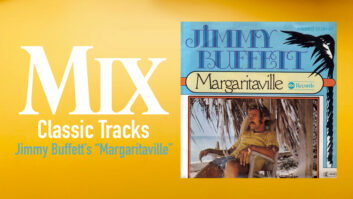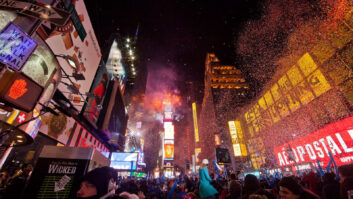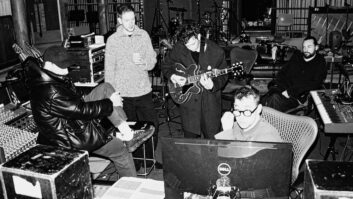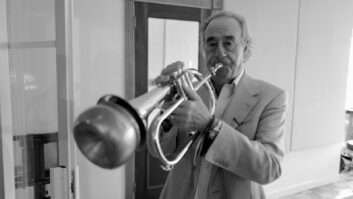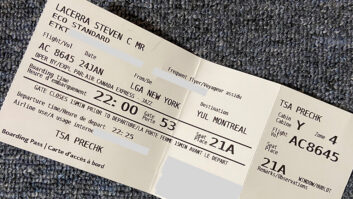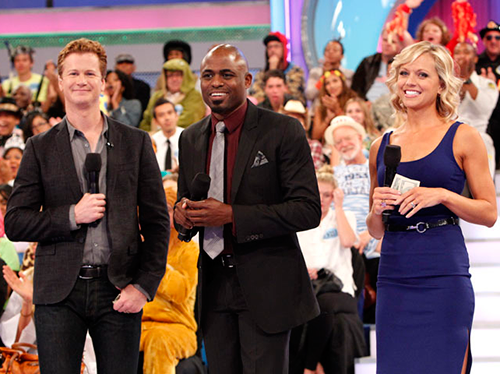
I’ll take what’s behind Curtain Number 2.” A classic line originating from the longstanding television game show, Let’s Make A Deal. It refers to taking a chance and choosing the unknown in the hopes that the risk will pay off in a big way. The audience-driven program has potential participants dressing up in eye-catching costumes garnering for attention to be chosen to play. This makes for a vivid set—and that’s not including the prizes and zonks. Today’s prizes: cars, tropical vacations, spas, jewelry and electronics. Zonks, which you are hoping is not behind Curtain Number 2, are booby prizes. Those on deck for today: a bubble-wrap living room and a Zonky Zonky Bang Bang vehicle, which looks exactly like its made-up name.
Starting in 1963, Let’s Make A Deal is now in its sixth season with current host, the multitalented, immensely likeable Wayne Brady. With this comes a music and sound effects team that while situated nowhere near each other on the show’s set, works like a well-oiled machine.
Brian Teed and Cat Gray are the sound generators. Teed, who has an audio engineering degree from Middle Tennessee State University and earned his chops on the road, created his position as music and sound effects mixer with Let’s Make A Deal in 2009. Keyboardist Gray, a veteran of live television and former head of Musicians Institute’s Keyboard Technology program, has been part of Brady’s team for 10 years and joined Let’s Make A Deal in 2011.
The two are formidable with their joint and individual ability to react on the spot to Brady’s and his announcer and foil, Jonathan Mangum’s unpredictable chatter and movements—not to mention those of model Tiffany Coyne, whose comedic timing is a good match for her fellow on-camera talent. Let’s Make A Deal is live to tape, with no second takes. All that happens in editing is cutting to fit the time frame.
There are a number of sections on Let’s Make A Deal for which Teed creates sound. Prize music that plays while the description of the prize(s) is being read. Zonk music that plays when a zonk is revealed. Game elements that are heard when games are being played. Contestant music that plays when a contestant joins Brady . . . Teed receives each episode’s script with the projected order of the show, as well as what is behind each curtain, and the possible contestants—who could change once the show is underway. He also triggers all the sounds and music heard in between, including the bumpers leading to commercials.
Arriving early, Teed goes through the prizes, pulling up sound effects that match the type of object without interfering with the prize-copy vocal. For instance, when a curtain is pulled back to show a new car, Teed triggers “spell music” (think magic wands and stars); if the prize is women’s accessories, he will cue some bossanova; if it is a motorcycle, road music; for electronics, a dance/pop piece where the melody is in the bassline. All around 130 bpm, the energy needs to be kept high. Each cue is approximately 30 seconds long and created by Teed.
When it comes to zonks, Teed plays with effects, creating a multitrack of what his imagination has come up with. There’s no telling what Brady might do with the zonk, so he always has additional sounds prepared.
“It’s fun to form the palette of music,” Teed says. “I have a big sound effects library I choose from. If it’s not quite right, then I record it. For the bubble-wrap living room, I got some bubble wrap and twisted it. [Coyne] is going to walk on it so I made footsteps using three different recorded sounds. She might pick up a pillow or do some other action, so I made bubble-wrap sounds for that. And I’ll have some zany music underneath. For the Zonky Zonky Bang Bang car, I’ve multitracked an old airplane, backfiring, and other engine sounds. I use Adobe Audition for that.”
This carries through to the sounds Teed creates for the actual games on the show. For “Draw Me A Deal” he has kitschy music playing while the contestant is drawing, ending with a buzzer. For “Strike A Match,” where a 12-by 8-foot board is turned around, he uses pneumatic sounds. For games involving small and big boxes there are other pneumatic sounds, mechanical for the former, rolling for the latter.

“I get inspired by the materials used on the games,” Teed says. “The big giant stone on Raiders of the Lost Ark was a recording of a station wagon rolling down the hill in neutral and then slowed down. I do stuff like that all the time. You can take any sound and manipulate the speed, keep the same pitch, or make it really fast and manipulate the pitch.”
Similar to the prizes, when looking at the contestants, Teed pulls up effects that match the costumes. But he may or may not use these. “It’s a delicate thing because if you’re late with the effect, it completely destroys it,” he says. “You have to be part stand-up comedian, which I’m not at all. That’s been the toughest thing for me is to work with professional comedians. If the moment’s gone, it’s gone.”
Triggering Effects
Teed uses Copernic Desktop Search to go through the effects he’s built over the years. Classifying the sounds is a huge part of what allows him to do what he does. If he doesn’t file them properly, he likely doesn’t know what they are, certainly not in the heat of the moment.
This is coupled with the Spot On sound effects system, a touchscreen playback system with eight channels. Each taping day starts with a blank template. Teed assigns a trigger tile on the touch screen for every sound effect or music cue. These have music cues with menus to manipulate the channel assignment, output level, the fade-in time, the fade-out time, pitch and speed. He can delay the play, trim the content and make playlists.
For instance, with a vacuum-cleaner zonk, when there’s no predicting how long Coyne will vacuum, Teed plays a vacuum sound effect loop for as long as needed. He then triggers that effect to fade out with a second sound effect of the vacuum powering down. This creates a single seamless effect. Teed also does this with the bump-outs to commercial, which eliminates the need for editing. Nevertheless, Teed sends the stems to the production mixer so the editors can access them if needed.
“I had the composer of the show’s theme music compose different genres of the theme,” Teed says. “If a trip to the Bahamas is shown last and we go to commercial from that, I’ll use the theme version rather than come out of one cue and go to another, which breaks up the momentum. Every once in a while I’ll screw up the timing and it sounds ridiculous.”
Cue Music!
The arrival of Cat Gray—whom Teed refers to as a musical genius—after the first two seasons has alleviated Teed’s workload, but that requires the two to develop an almost telepathic connection. Prior to Gray’s involvement, Teed had to be ready in seconds with any style of music that Brady might jump into. Now, Gray has that unenviable job, which he meets head-on with his wide range of styles and instant recall.
“I have pages of sample playback of drum loops that hopefully cover any occasion that might come up,” Gray explains. “Then I’ve got patches in six keyboards that come through another computer as mixer and controller for sending program chains. It comes down to a memory situation, to remember which style is in any given position. Because we’re super fast, people think it’s fake or that it’s written and planned out ahead of time, but it’s not. It’s completely random.”
Let’s Make A Deal is a notoriously loud show with maximum volume coming from the cacophonous audience. To hear his way through the show, Gray uses three monitoring systems. He has in-ear monitors on one side, another monitor sits on his other side, and he needs the main system to he can gauge his volume against that of Brady’s.

To communicate with Teed, Gray—who is on camera—has a pedal he presses that flashes a beacon in Teed’s room, which is off the set. This signals to Teed to hold off on cueing any music as Gray will take control from that moment through to bumping out to commercial. Because one of the cameras is always on Gray, he can also communicate with Teed via slight nods and headshakes. And Teed can speak directly to Gray via his in-ear monitors.
“[Gray] can do any style of music at the drop of a hat,” Teed says. “It used to be a struggle because I had to play the music and the effects. Now it’s even crazier because Cat improvises with [Brady].”
From the audience perspective everything flows as if on autopilot, with their only concern being how many hugs they get from Brady. And that is exactly the result the Let’s Make A Deal sound and effects team wants.
Brian Teed’s Gear List
• SpotOn playback software system on Windows 7 on a Dell tower
• ELO 1919L 19-inch touch screen 5-wire resistive touch screen to control SpotOn
• MIDI keyboard connected to the Layla for MIDI trigger information to the SpotOn
• Echo Layla 3G USB audio interface feeding into Yamaha O1V96 via optical ADAT
• Korg Triton ProX
• Genelec 8040As monitors
Cat Gray’s Gear List
• Nord C1 as a source and a controller
• Yamaha Motif-Rack XS
• Yamaha Motif-Rack ES
• Native Instruments Maschine
• Mikro
• Apple MacBook Pro (2)



